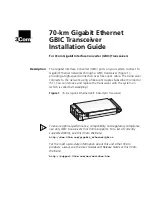
Endura APA592
pH / Redox (ORP) transmitter
2 Use in Areas Requiring Ignition Protection
OI/APA592–EN Rev. E
11
2 Use in Areas Requiring Ignition Protection
Special regulations must be observed in hazardous areas for the auxiliary power connection, signal inputs /
outputs and ground connection.
2.1 Approvals
2.1.1 CE Mark
The APA592–PH including type B LCD display / configuration software meets all requirements for the CE
mark in accordance with applicable EC Directives 2004/108/EC (EMC), 2006/95/EC (LVD) and 94/9/EC
(ATEX).
2.1.2 Ignition Protection
This transmitter is FM, CSA and ATEX/IEC approved – see Section 2.5, page 12 for hazardous area
relevant information.
2.2 Ground
If for functional reasons, the intrinsically safe circuit must be grounded by connecting it to an equipotential
bonding system, it must be grounded at a single location only.
2.3 Interconnection
If APA592-pH transmitters are operated in an intrinsically safe circuit, proof of interconnection may be
required during the installation. In general, intrinsically safe circuits require proof of interconnection.
2.4 Configuration
APA592-pH transmitters can be installed in hazardous areas in compliance with proof-of-interconnection
and directly in a hazardous area using approved handheld HART terminals (proof of interconnection may be
required during the installation) as well as by coupling an ignition-proof modem to the circuit outside the
hazardous area.
Caution.
All parts must be installed in accordance with manufacturer information and relevant standards
and regulations.
Startup and operation must be performed in accordance with ATEX User Directive 99/92/EC or
BetrSichV (EN60079-14).














































